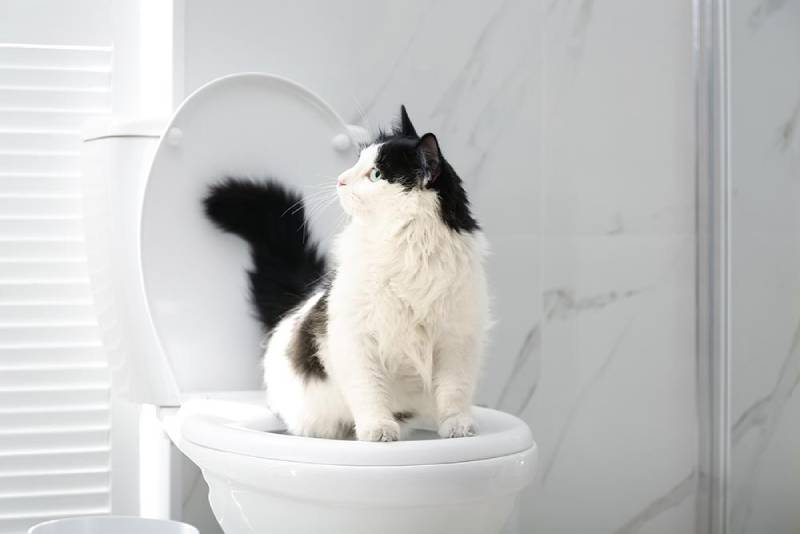The Dangers of Flushing Cat Poop Down Your Toilet - Advice for Better Disposal
The Dangers of Flushing Cat Poop Down Your Toilet - Advice for Better Disposal
Blog Article
What're your concepts about How to Dispose of Cat Poop and Litter Without Plastic Bags?

Introduction
As cat owners, it's essential to be mindful of just how we dispose of our feline pals' waste. While it may appear practical to flush feline poop down the bathroom, this method can have detrimental effects for both the setting and human health.
Ecological Impact
Flushing cat poop introduces hazardous virus and bloodsuckers right into the supply of water, posturing a significant threat to aquatic ecological communities. These pollutants can negatively affect aquatic life and compromise water top quality.
Wellness Risks
Along with ecological concerns, purging pet cat waste can also present health threats to people. Cat feces might include Toxoplasma gondii, a parasite that can cause toxoplasmosis-- a possibly extreme health problem, especially for pregnant ladies and individuals with damaged body immune systems.
Alternatives to Flushing
Thankfully, there are more secure and much more accountable ways to dispose of feline poop. Take into consideration the following choices:
1. Scoop and Dispose in Trash
One of the most usual approach of taking care of cat poop is to scoop it right into a biodegradable bag and throw it in the trash. Make sure to make use of a dedicated trash inside story and get rid of the waste without delay.
2. Usage Biodegradable Litter
Go with eco-friendly feline clutter made from materials such as corn or wheat. These litters are eco-friendly and can be securely taken care of in the garbage.
3. Hide in the Yard
If you have a backyard, think about hiding cat waste in a designated area away from vegetable gardens and water resources. Make certain to dig deep enough to prevent contamination of groundwater.
4. Set Up a Pet Waste Disposal System
Invest in a pet waste disposal system especially developed for feline waste. These systems use enzymes to break down the waste, lowering odor and ecological influence.
Final thought
Liable pet possession extends past offering food and shelter-- it also involves correct waste monitoring. By avoiding purging feline poop down the toilet and opting for alternate disposal approaches, we can decrease our environmental footprint and secure human wellness.
Why Can’t I Flush Cat Poop?
It Spreads a Parasite
Cats are frequently infected with a parasite called toxoplasma gondii. The parasite causes an infection called toxoplasmosis. It is usually harmless to cats. The parasite only uses cat poop as a host for its eggs. Otherwise, the cat’s immune system usually keeps the infection at low enough levels to maintain its own health. But it does not stop the develop of eggs. These eggs are tiny and surprisingly tough. They may survive for a year before they begin to grow. But that’s the problem.
Our wastewater system is not designed to deal with toxoplasmosis eggs. Instead, most eggs will flush from your toilet into sewers and wastewater management plants. After the sewage is treated for many other harmful things in it, it is typically released into local rivers, lakes, or oceans. Here, the toxoplasmosis eggs can find new hosts, including starfish, crabs, otters, and many other wildlife. For many, this is a significant risk to their health. Toxoplasmosis can also end up infecting water sources that are important for agriculture, which means our deer, pigs, and sheep can get infected too.
Is There Risk to Humans?
There can be a risk to human life from flushing cat poop down the toilet. If you do so, the parasites from your cat’s poop can end up in shellfish, game animals, or livestock. If this meat is then served raw or undercooked, the people who eat it can get sick.
In fact, according to the CDC, 40 million people in the United States are infected with toxoplasma gondii. They get it from exposure to infected seafood, or from some kind of cat poop contamination, like drinking from a stream that is contaminated or touching anything that has come into contact with cat poop. That includes just cleaning a cat litter box.
Most people who get infected with these parasites will not develop any symptoms. However, for pregnant women or for those with compromised immune systems, the parasite can cause severe health problems.
How to Handle Cat Poop
The best way to handle cat poop is actually to clean the box more often. The eggs that the parasite sheds will not become active until one to five days after the cat poops. That means that if you clean daily, you’re much less likely to come into direct contact with infectious eggs.
That said, always dispose of cat poop in the garbage and not down the toilet. Wash your hands before and after you clean the litter box, and bring the bag of poop right outside to your garbage bins.
https://trenchlesssolutionsusa.com/why-cant-i-flush-cat-poop/

As a passionate reader on Can You Flush Cat Poop Down The Toilet?, I thought sharing that excerpt was really useful. Sharing is nice. You just don't know, you might be doing someone a favor. I praise you for your time. Visit us again soon.
Click Report this page